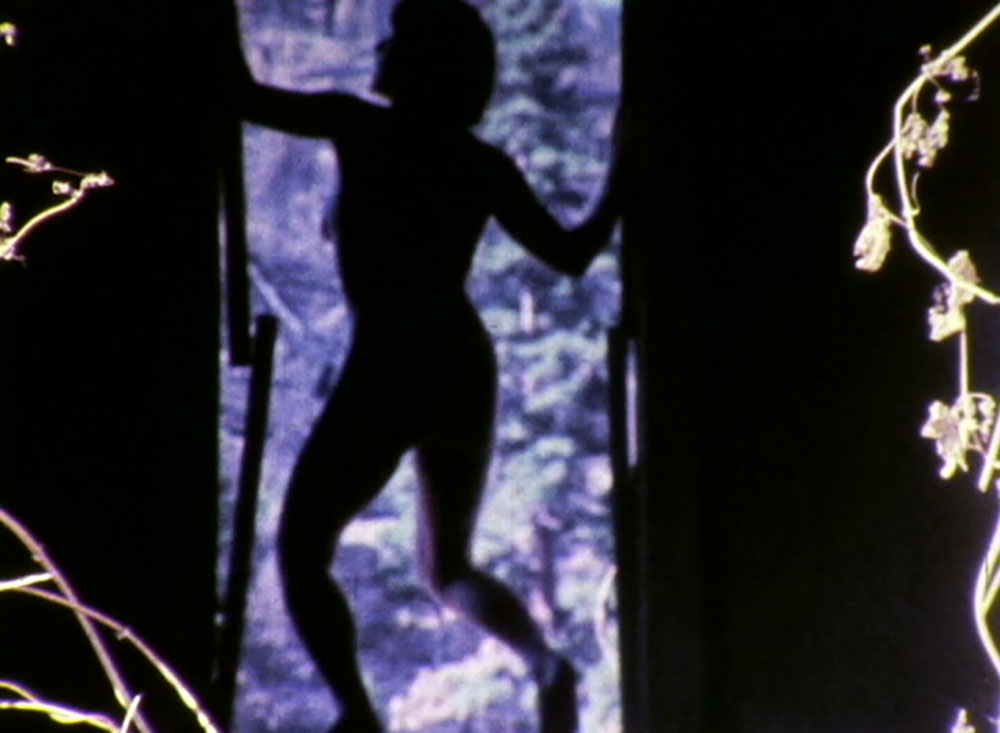Even when they are not directly erotic, the films of Barbara Hammer hit a tactile nerve. Whether in the overt sexuality of Dyketactics (1974) or the elegiac Optic Nerve (1985), Hammer’s cinema emits pure sensuality. Three films screening at Company Gallery commemorate what would have been the experimental filmmaker’s 84th birthday, exploring the hypnotic limitations of the body. X-rays and wheelchairs are layered over IV drips and galloping horses. Images soak into one another, stutter, and retrace their steps. The repetition compulsion of Optic Nerve revisits the labyrinthian hospital hallways around which Hammer once pushed her grandmother in a wheelchair. Presented next to A Horse is Not a Metaphor (2008), which follows Hammer’s own chemotherapy treatment, the film takes on an eerily prophetic quality.
Hammer’s documentation of embodied politics is known for indexing lesbian history, but her work is also concerned with the limitations of the body. She was a longtime advocate for death with dignity. In A Horse is Not a Metaphor, Hammer learns to ride horses at Georgia O’Keeffe’s Ghost Ranch and undergoes chemotherapy. With an ominous choral score by Meredith Monk, an enraptured nude Hammer bathes in the river and wanders through the woods. Horses are superimposed next to Hammer as she undergoes chemo, yearning for a new thrill.
A few years ago, I spent some time in a hospital due to a pneumothorax. After waiting next to a gunshot victim, I was wheeled away for an intravenous contrast dye. I cried out in pain as I felt the dye flood my body. My breathing tube became my partner as I carried it to and from the bathroom in a thin blue hospital gown. I was prodded all day by young doctors and dreamt all night of women on motorcycles. Hammer’s films remind us of the thin line between pleasure and pain, as when a bloody butterfly blooms on a screen. She imprints naked bodies on 16mm film, knowing both will degrade over time. In Optic Nerve body parts are blown up to Cubist proportions atop a skittering mechanical soundtrack.
In an interview with Masha Gessen, Hammer commented on the hysteria over the alleged disappearance of butches: “A lot of my lesbian friends were upset about so many butch friends of ours who were becoming trans, and I was always trying to explain to them: everybody gets to explore.” Guided by pleasure, the body’s impulses become a roadmap—even if that includes coming to terms with pain, as in these films.
The art of living is the same as the art of dying, Hammer once said. In her memoir, HAMMER!, the artist describes throwing her body around on a bed in Available Space (1979) as a way to depict the suffocation of a “tight relationship where my lover was my teacher, my partner, and my roommate in a one-too-few bedroom apartment.” She has a room of one’s own. Her bed is solitary and open with enough space to accommodate both sides now. The filmmaker cuts a shot of her nude body rolling around a bed in overblown daylight, speeding it up and slowing it down as she eventually starts to jump up and down. Freeze-frames of blurry somersaults are splashed in shadow. At the end of the film Hammer walks toward the camera, recalling the end of a confessional TikTok, her body finally fully visible until obscured by darkness.
Available Space is on view at Company Gallery through June 3. Three films alternate screening Wednesdays through Saturdays.


